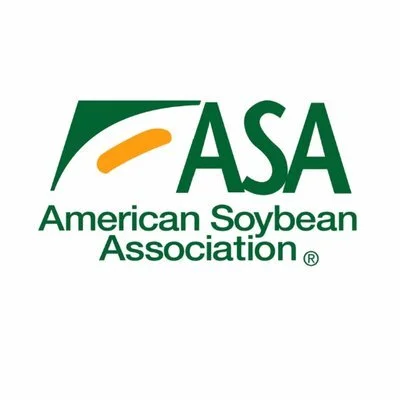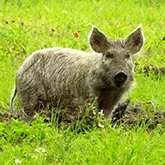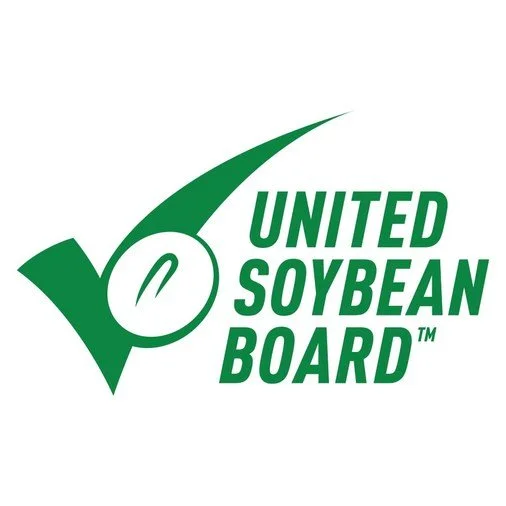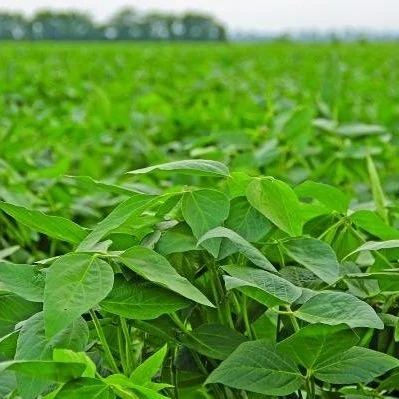USDA released its August Crop Production report on Aug. 12 and the survey-based report has farmers indicating corn yields will reach 175.4 bushels per acre and soybean yields at a record 51.9 bushels per acre in 2022. This is despite extreme heat and sporadic rainfall throughout the countryside.
Read MoreLouisiana corn for grain production is forecast at 84.9 million bushels, down 18 percent from 2021. Based on conditions as of August 1, yield is expected to average 175 bushels per acre, down 8 bushels from last year. Producers expect to harvest 485,000 acres of corn for grain, down 80,000 acres from 2021.
Read MoreThe farmer-leaders of the United Soybean Board (USB) convened for its summer board meeting on July 26-27 in Kalamazoo, Michigan, to approve a 2023 fiscal year budget of $123M for program work, starting Oct. 1, 2022. Spanning eight portfolios, these investments in research, education and promotion add value to U.S. soybeans with the goal to build resilience, differentiation and reputation. This portfolio ladders up to USB's new vision of delivering sustainable soy solutions to every life, every day.
Investment portfolios will continue the board's work of creating consistent, long-term domestic and global market opportunities to further demand for U.S.-grown soybeans.
"Our thinking, planning and work as a board has become a much more deliberate and idea-driven process, challenging our board members to think big. Each portfolio is farmer-directed and works together to create demand for U.S. soybeans across the entire global soy value chain," said Ralph Lott, USB Chair and farmer from New York. "We've successfully shifted from project takers to portfolio makers, and the end result is more strategic thinking. The preference for U.S. soybeans grows while farmers continue to see strong ROI on their checkoff dollars."
Investment portfolios are approved by the full board and consist of programs across Supply and Demand Action Teams driven by the three priority areas of 1) Innovation & Technology, 2) Health & Nutrition, and 3) Infrastructure & Connectivity. FY23 programs impact everything from improving production on the farm to expanding markets across animal agriculture, soyfoods and providing a renewable alternative for biofuels and nonfood uses. Some examples of these soy checkoff investments aim to:
Enhance soybean cropping system improvement that creates opportunities to reward and support farmers and other value chain participants, including the growth of high oleic soybean production to meet demand for specialty soybeans while providing a farmer premium.
Further soy's role in the evolving clean energy movement, with investments that support using soybean oil as a feedstock for biodiesel and renewable diesel in marine, rail and on-road applications. Biofuels are the largest industrial use for soybean oil and require investments to reach maximum potential.
Develop nutrition and health research that distinguishes U.S. soybean meal's value drivers (amino acids and energy), supports animal health, builds evidence that discerns U.S. soybean meal from the competition and strengthens key industry partnerships.
Encourage commodity partnerships to improve soil health, collaborating with National Corn Growers Association and National Pork Board to implement cover crops on 30 million acres of soybeans and corn by 2030, focused on meeting sustainability goals while improving farmer productivity.
Grow exports in more than 80 countries through the U.S. Soybean Export Council's strategy to differentiate U.S. soybeans in the global marketplace. USB also partners with the U.S. Meat Export Federation and the USA Poultry and Egg Export Council to promote exports of soy-fed meat, as well as the American Soybean Association's World Initiative for Soy in Human Health to create long-term demand for U.S. soybeans in developing and emerging markets and improve food security.
Improve best management practices through partnerships that lead to faster, real-time dissemination of pest and disease research findings, such as developing a pesticide and fungicide calculation tool that helps farmers determine regional application thresholds to maximize yield potential.
Increase focus on fertilizers and biologicals that support farmers and farming system resilience in an uncertain crop input market environment.
Reach key audiences to elevate the reputation of U.S. soybeans, expanding trust with consumers and helping them develop a deeper understanding and appreciation for how U.S. soybean farmers can deliver sustainable solutions for more than 1,000 renewable products on the market.
"Over the past year, we've changed the way we make investment decisions. The new Value Alignment Committee gives farmer-leaders more input in the types of programs the checkoff supports. Today marks the culmination of that new process," said Meagan Kaiser, USB Vice Chair and farmer from Missouri. "This is a new, exciting direction, and we couldn't be successful without our state and national farmer volunteers and checkoff partners who work diligently on behalf of the 515,000 U.S. soybean farmers. I also want to extend thanks to the Michigan Soybean Committee for hosting this memorable meeting and showcasing the diversity of Michigan agriculture."
About United Soybean Board:
United Soybean Board's 78 volunteer farmer-leaders work on behalf of all U.S. soybean farmers to achieve maximum value for their soy checkoff investments. These volunteers create value by investing in research, education and promotion with the vision to deliver sustainable soy solutions to every life, every day across the three priority areas of Infrastructure & Connectivity, Health & Nutrition, and Innovation & Technology. As stipulated in the federal Soybean Promotion, Research and Consumer Information Act, the USDA Agricultural Marketing Service has oversight responsibilities for USB and the soy checkoff. For more information on the United Soybean Board, visit unitedsoybean.org.
The farmer-leaders of the United Soybean Board (USB) convened for its summer board meeting on July 26-27 in Kalamazoo, Michigan, to approve a 2023 fiscal year budget of $123M for program work, starting Oct. 1, 2022. Spanning eight portfolios, these investments in research, education and promotion add value to U.S. soybeans with the goal to build resilience, differentiation and reputation.
Read MoreHow will this year’s weather conditions affect crop production? The Monthly Agricultural Yield Survey conducted by the U.S. Department of Agriculture’s National Agricultural Statistics Service (NASS) will survey U.S. farmers beginning July 30, 2022, regarding yields of the major row crops throughout the growing season across the United States.
Read MoreThis month’s 2022/23 U.S. corn outlook is for larger supplies and higher ending stocks. Corn beginning stocks are raised 25 million bushels, based on reduced feed and residual use for 2021/22 as indicated in the June 30th Grain Stocks report.
Read MoreWith much of the corn crop denting, kernels are filling weight and size. Since heat unit accumulation has been higher this year, the crop is moving along at a much faster pace. As the corn crop approaches maturity, one of the most important management decisions you will make is when to terminate irrigation.
Read MoreEarlier this week, USDA surprisingly lowered soybean crop conditions for week 27 of the calendar year (which corresponds to the second week of July) to 62% good or excellent vs 63% last week.
This ran counter to trade expectations of a 1% to 2% improvement in the top two rating categories given good amounts of rain that fell in key soybean producing areas last week.
Using our usual ratings system, we weight the crop based on the percent in each category and assign that category a factor of 2 for very poor, 4 for poor, 6 for fair, 8 for good, and 10 for excellent and then sum the results.
Read MoreThe early soybean production system (ESPS) was proposed in the mid-1990s for the Southern United States. This practice consisted of growing varieties with a maturity group of III and IV and a planting date between mid-April to mid-May instead of the traditional recommendation of planting a maturity group V-VII variety between May and June, which was known as a full-season production system.
Read MoreTwo lines of commercial tires are being made with a renewable soybean oil compound as part of the soy checkoffs research investment, according to the Goodyear Tire & Rubber Company.
The Goodyear Metro Miler G152 and G652 tires for transit buses along with the popular Endurance WHA waste haul tire are now made with soybean oil, which replaces a portion of the petroleum-based materials used in their production.
Read MoreIf you’re passionate about agriculture and ready to hone your skills and network to become a leader in the industry, the American Soybean Association and Corteva Agriscience are looking for you to apply for the next class of ASA Corteva Young Leaders!
Read MoreThe U.S. Department of Agriculture (USDA) National Agricultural Statistics Service in cooperation with the USDA Animal and Plant Health Inspection Service (APHIS) - Wildlife Services, is conducting a Feral Swine Damage survey to measure the costs of feral swine damage to crop producers growing corn, soybeans, wheat, rice, peanuts, and sorghum in the states of Alabama, Arkansas, California, Florida, Georgia, Louisiana, Mississippi, Missouri, North Carolina, South Carolina, and Texas.
Read MoreGrowers are again expressing frustration over the Endangered Species Act biological evaluations released by EPA. As with the draft BEs last August, the final BEs are overly conservative and in some instances fail to use important data.
Read MoreSoy checkoff and partners supporting the Take Action program announce PEST Week Live! Join the panel of USB farmer-leaders and university research experts as they discuss the current state of pest resistance and best management practices.
Read MoreThe Louisiana State University AgCenter works with industry experts and soybean growers across the state to test plots, harvesting data for varieties on abiotic and biotic stress resistance, yield, and data necessary to make recommendations.
Read More














